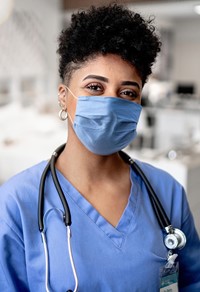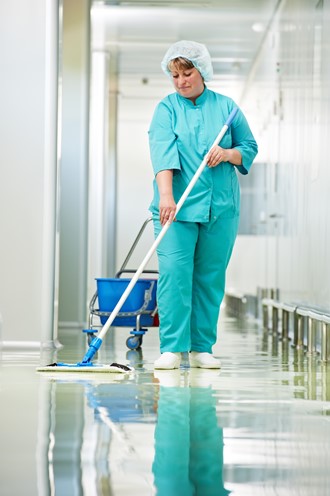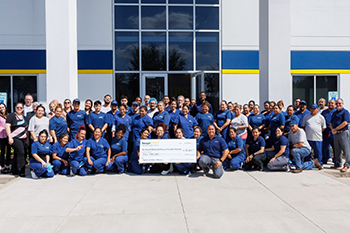 When it comes to keeping patients healthy in surgical situations, a hospital’s first line of defense has always been its nurses. These often-unsung heroes are the ones delivering much of the pre-operative and post-operative care to patients, as well as working to keep environments clean and sanitary to alleviate the risk of spreading infection.
When it comes to keeping patients healthy in surgical situations, a hospital’s first line of defense has always been its nurses. These often-unsung heroes are the ones delivering much of the pre-operative and post-operative care to patients, as well as working to keep environments clean and sanitary to alleviate the risk of spreading infection.
In fact, the role that surgical nurses play is so crucial that there is an organization dedicated to supporting operating room nurses— called the Association of periOperative Registered Nurses (AORN), which serves as a model for best practices when it comes to surgical attire in hospital and surgical settings. Following AORN-recommended surgical attire guidelines can help avoid complications as a result of an opportunistic infection from a surgical procedure.
Why AORN is Such a Powerful Resource
First founded in 1949, AORN sought to establish a national community for operating room nurses in order to share best practices for patients undergoing surgery. Today, AORN is a community of 43,000 professionals that continues to strive to unite and empower perioperative nurses, healthcare organizations, and industry partners in order to facilitate safe surgical experiences for all patients at all times.
As a result, AORN is an established leader in providing resources to hospitals and ambulatory centers across the United States. These resources include staff education, career and leadership development guidance, and facility and health system solutions for patient safety. Some of the most well-developed evidence-based guidelines for surgical attire such as scrubs have emerged from AORN, and these best practices are reviewed and updated regularly.
Identifying AORN Surgical Attire Guidelines
 As a matter of course, AORN has conducted exhaustive research in order to create guidelines for scrubs and other surgical attire. These guidelines are often broad, such as providing the cleanest surgical environment possible for all patients undergoing operative and other invasive procedures. However, they can also be granular and specific, such as the research into the types of clean surgical head covers or hoods that are best at reducing possible contamination from bacterial organisms in human hair.
As a matter of course, AORN has conducted exhaustive research in order to create guidelines for scrubs and other surgical attire. These guidelines are often broad, such as providing the cleanest surgical environment possible for all patients undergoing operative and other invasive procedures. However, they can also be granular and specific, such as the research into the types of clean surgical head covers or hoods that are best at reducing possible contamination from bacterial organisms in human hair.
It’s this wide variance in guidelines, plus the sheer volume of data that AORN generates in their research efforts, that can sometimes make it challenging to isolate these guidelines in order to implement them in a practical manner. Common obstacles preventing organizations from successful implementation include not having a policy or procedure on scrub fabrics, storing jewelry and disinfecting phones, allowing home laundering that fails to fully disinfect surgical attire, not having enough properly laundered surgical attire, and other considerations.
Fortunately, there are third-party partners out there, like ImageFIRST, that are already aligned with AORN’s surgical attire guidelines, allowing you to easily and effectively follow their best practices for improved patient and staff experiences.
Request a Quote for a Fully Managed Laundry Program!
Implementing AORN-Recommended Practices for Surgical Attire
One such example of AORN-recommended practices is for scrubs. It’s universally understood that scrubs must be durable, sanitized appropriately before use, and designed to protect both the healthcare professional and patient reliably from infection and contamination. This also goes for PPE such as gowns, caps, and masks, as well as any other towels or cloths used during surgical procedures.
This is where third-party partners can support a facility. A strong laundry vendor will ensure infection prevention with a proper wash process to fully clean and sanitize all surgical attire, provide proper storage solutions, and manage inventory on your behalf so staff always has clean scrubs available in the size they need.
At ImageFIRST, we supply fluid-repellent isolation gowns and absorbent surgical towels that have been thoroughly sanitized and then packaged, making dispensing easy and limiting pathogen exposure. We also utilize a bacteria inhibitor as an additional step in our wash process, which helps prevent any bacteria that may land on the products during their use from being able to spread. Each of these steps contributes to upholding AORN’s goals of patient safety in surgical experiences.
Learn More About ImageFIRST’s Isolation Gowns and Surgical Towels!
Read on for some guidance from ImageFIRST on several key best practice areas from AORN.
Fabric Recommendations
- Clean attire minimizes introduction of microorganisms and lint from personnel to clean items/environment
- Scrubs should be tightly woven, stain resistant, durable
- Warm-up jackets should be long-sleeved and be poly-cotton blend to decrease shedding component
- Avoid personal attire that extends above the neck/below the sleeve
- Hair coverings should cover facial hair, sideburns, and head
To aid with these recommendations, ImageFIRST provides compliant surgical scrubs, gowns and towels as part of a fully managed laundry program.
Laundering Recommendations
- Attire should be changed if wet/contaminated
- Wearers should attempt to prevent prolonged exposure to potentially harmful bacteria
- Scrubs and other attire should not be laundered at home — bioburden on uniforms at the beginning of a shift following home laundering is the same found at the end of the shift
- Scrubs should not be worn from facility to facility – change into street clothes when leaving one facility and don clean attire on arrival at the second
In support of these recommendations, a study of bacterial contamination of home-laundered healthcare uniforms found that 39% of uniforms identified as “clean” at the beginning of the shift were actually found to be contaminated with one or more microorganisms, including vancomycin-resistant enterococci, methicillin-resistant Staphylococcus aureus, and Clostridium difficile (Journal of Hospital Medicine). This is why a laundry provider is so important.
ImageFIRST, for example, doesn’t just provide clean and sanitized surgical attire — we also provide a fully managed linens experience to hospitals and medical facilities. With a fully managed program, your staff will have the exact inventory needed, and you’ll never pay for more than you need. We also follow medical laundering standards for superior infection prevention that meet or exceed OSHA, CDC, and HLAC standards.
These same standards also comply with The Joint Commission requirements, thanks to a “dead on contact” sanitizing wash and the bacteriostatic softener used to launder these items. The protective properties of each ImageFIRST-provided garment are replenished with a Fluid Repellent, and protection levels are confirmed with regular strike-through tests. Medical isolation gowns arrive at healthcare facilities in dispensing bags that increase infection prevention efforts by minimizing handling by staff – another crucial element to keeping surgical patients safe from infection.
Storage Recommendations
- Should get changed in a designated dressing area to decrease cross contamination
- Should get changed if leaving the facility
- Should not place worn attire in lockers to be worn again – microbes can survive longer on fabrics
To aid with these recommendations, ImageFIRST offers a complete scrub management solution. as well as linen storage options such as hampers, carts and lockers.
Healthcare Safety Begins with Surgical Attire
AORN knows the importance of clean, safe, and effective surgical attire, which is why the organization has devoted so much time and energy to researching and publishing healthcare recommendations for scrubs, surgical gowns, caps, towels, and other types of attire integral to the surgical process.
Partnering with a provider you can trust to follow AORN surgical attire guidelines is just as crucial, as this frees up your staff from worrying about whether they are compliant with AORN guidelines. Letting your surgical attire provider handle the details of laundering your scrubs, gowns and towels properly and then returning them to your hospital for nurses to wear lets your organization focus on other best practices formulated to protect your patients – and in the end that’s what being a healthcare provider is all about.

